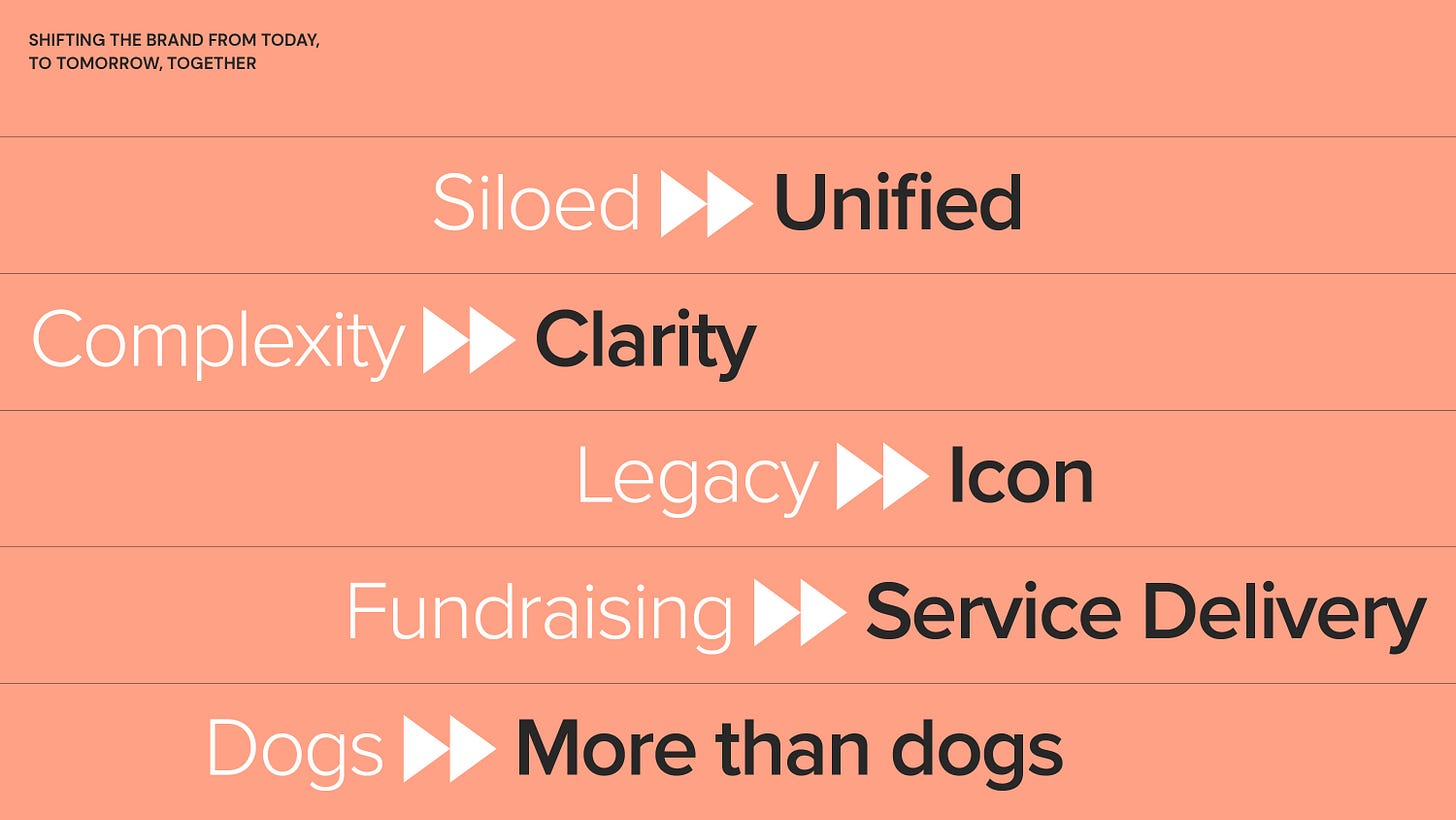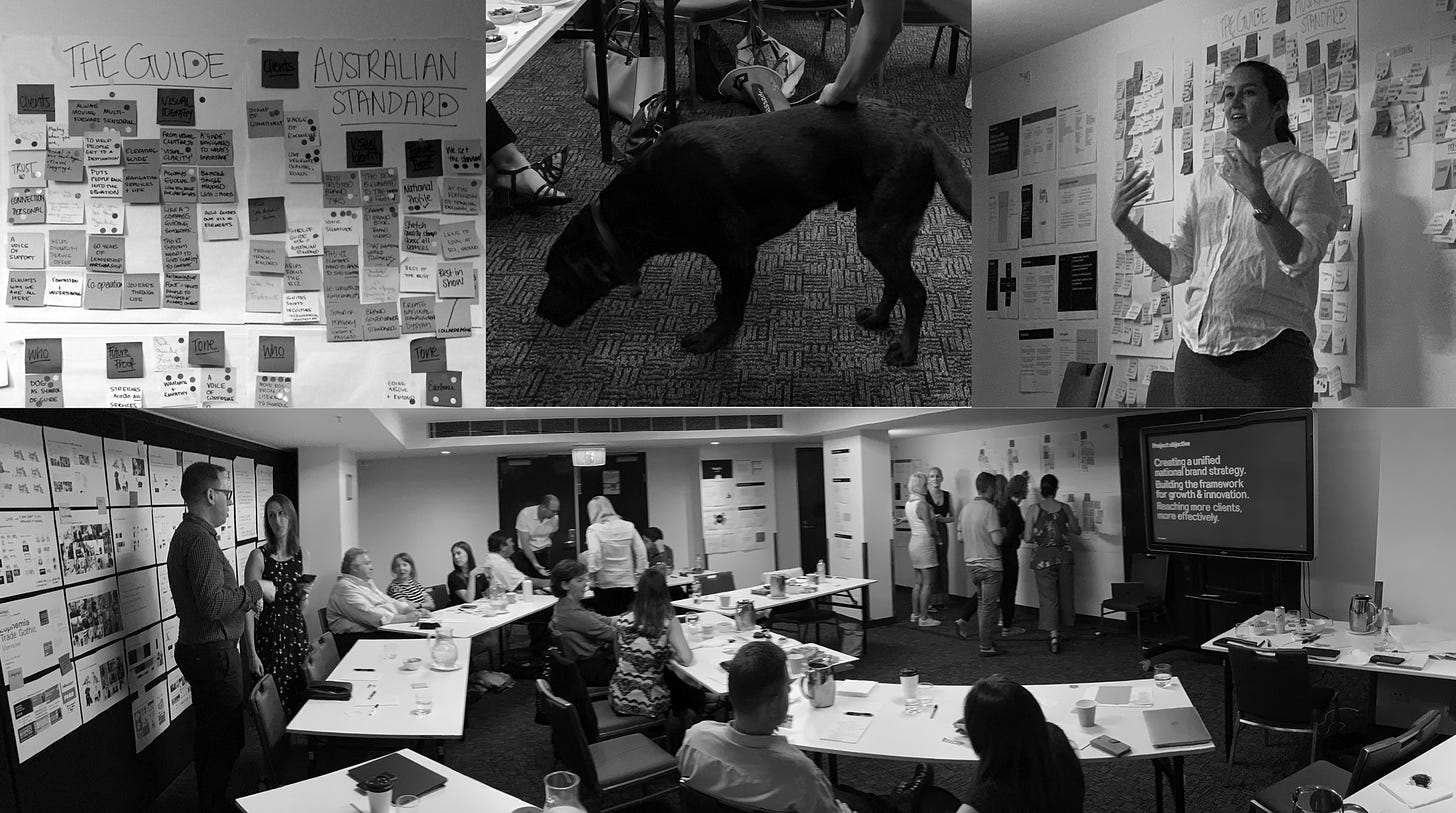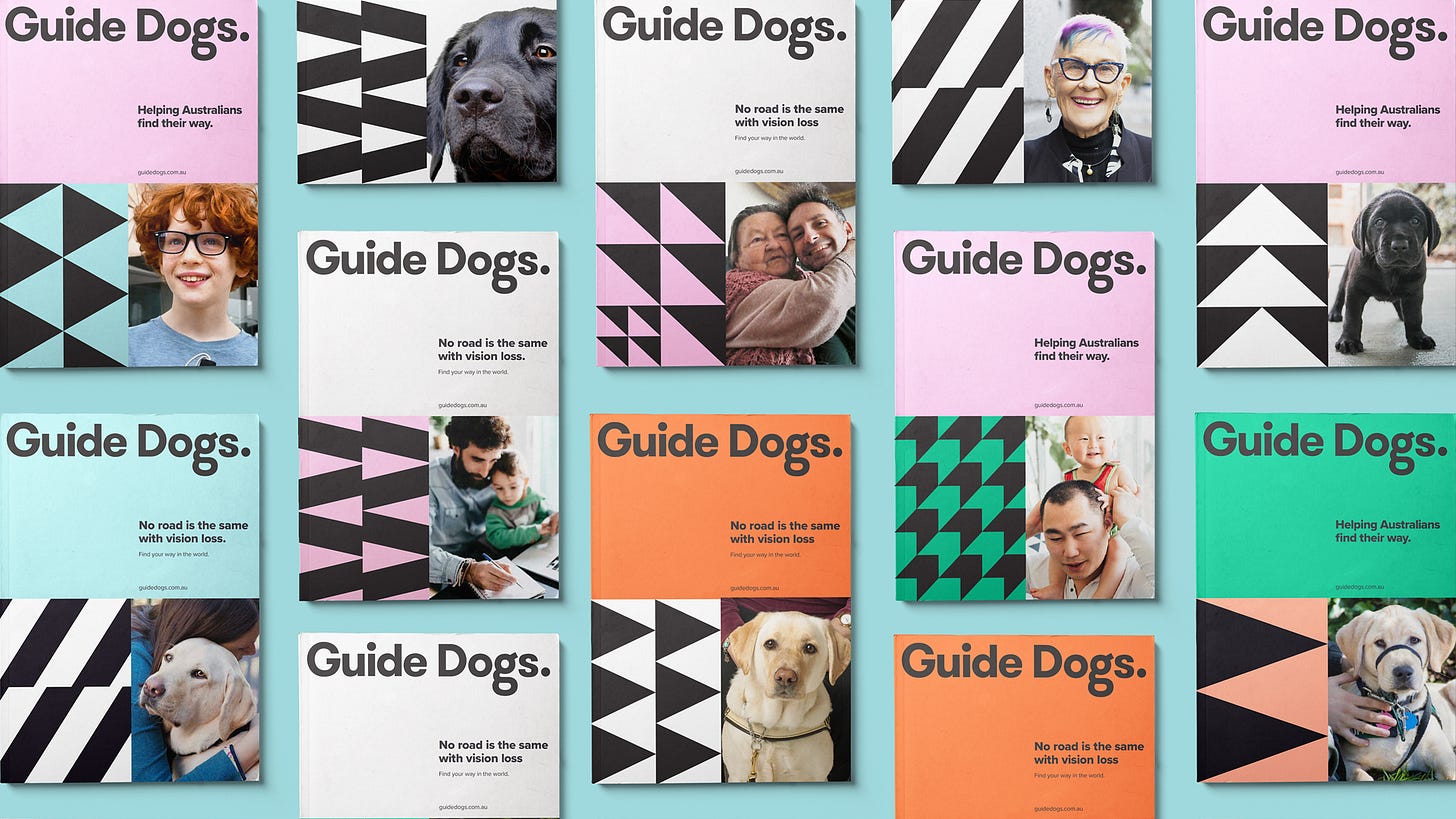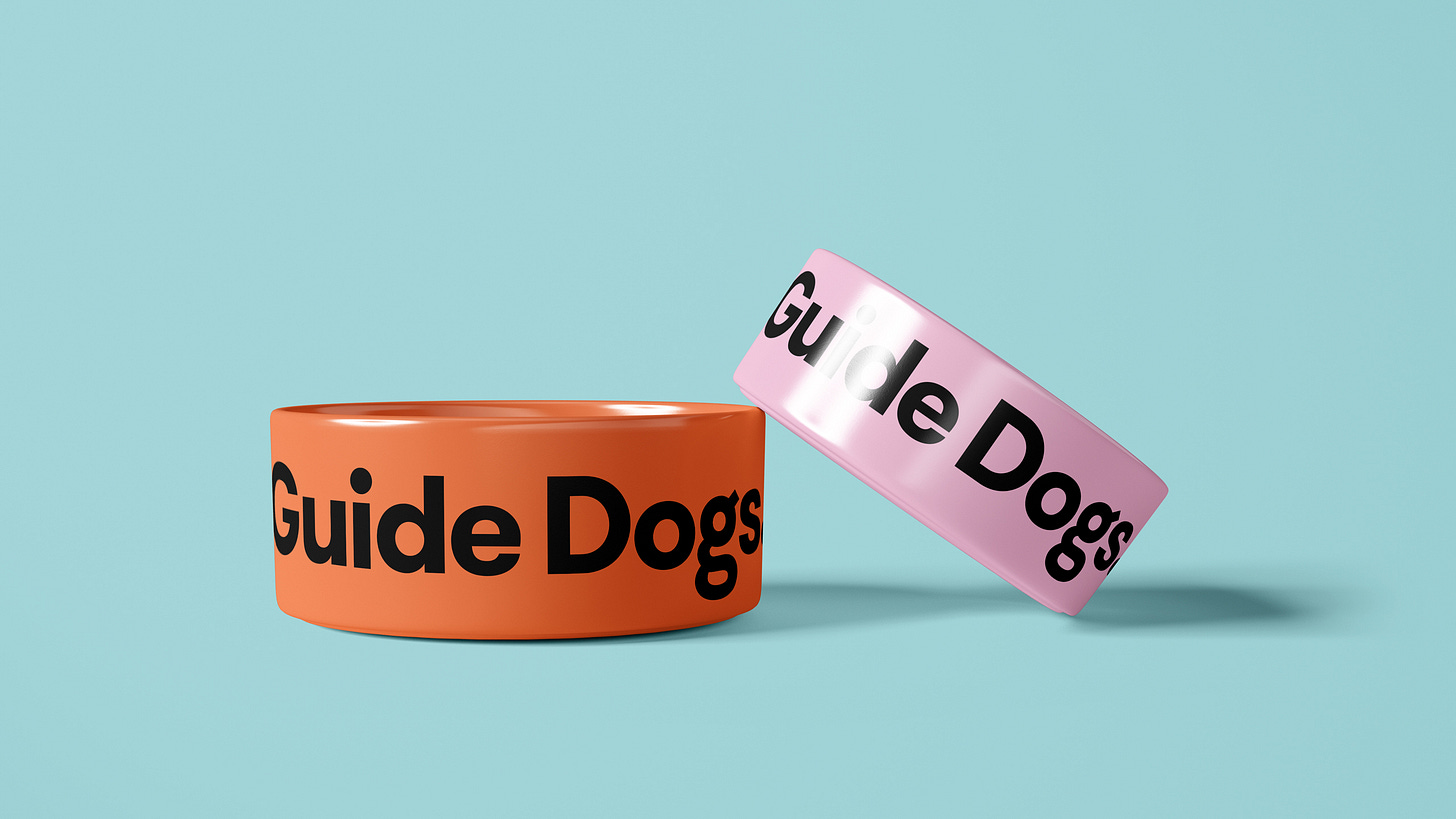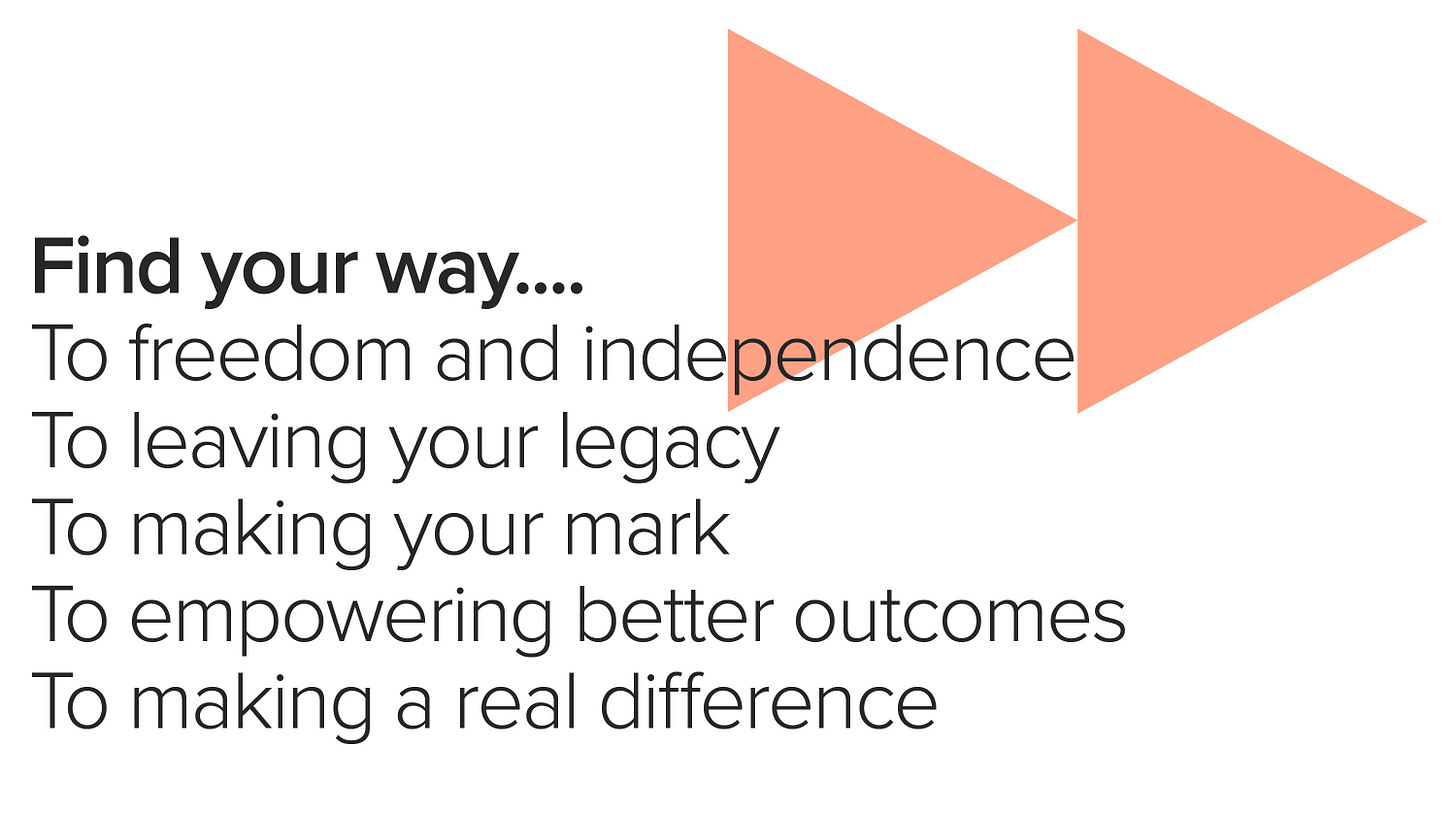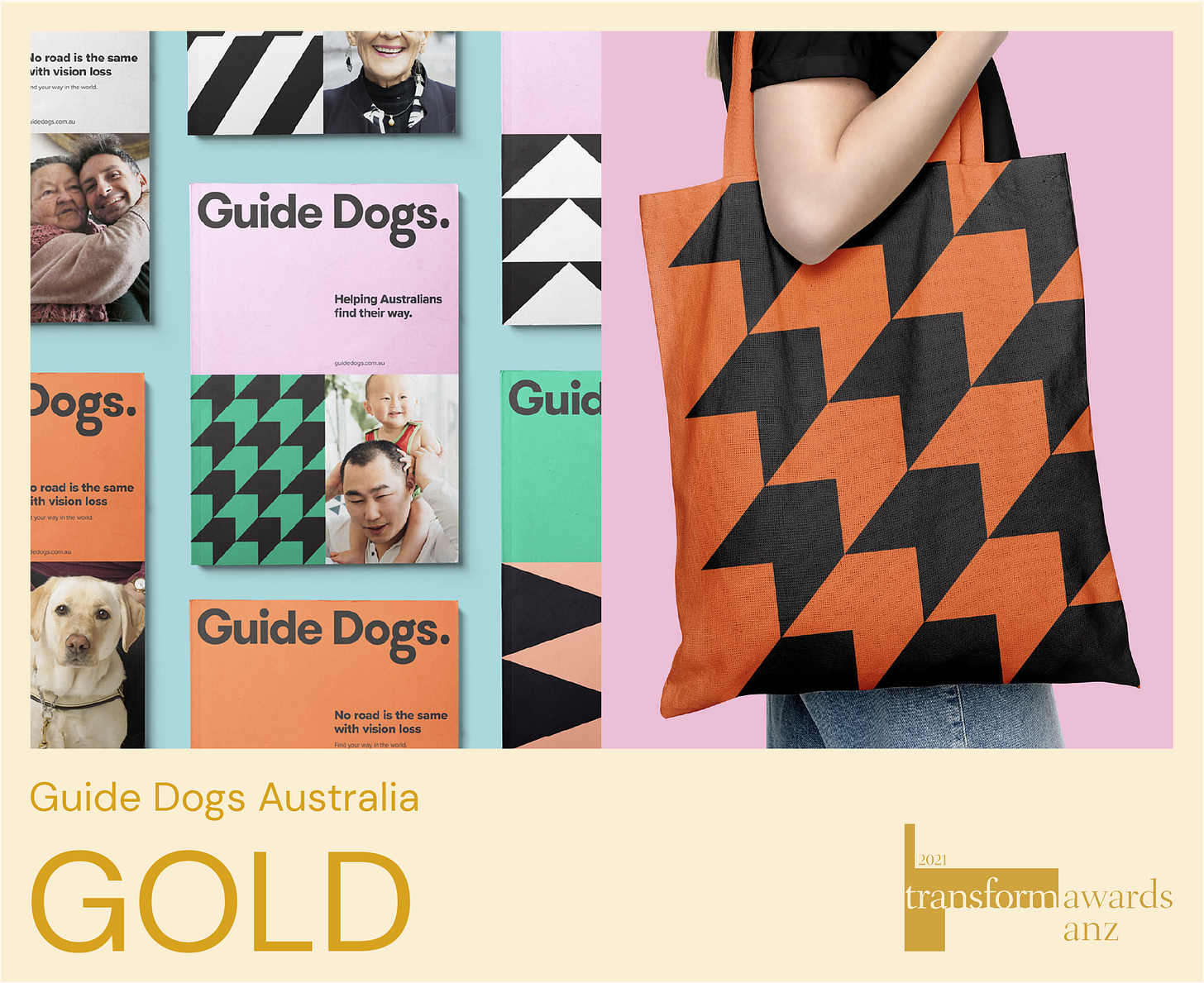What to do when your business outgrows your brand?
Read all about Guide Dogs Australia's brand transformation in their own words
From one project to the next, we always find it’s helpful to pull back the curtain on the branding process to reveal different perspectives and share new insights.
One such recent project is Guide Dogs Australia and how a commitment to client-centric collaboration led the organisation to launch as a national brand for the first time in its storied 60-year existence.
CMO Australia interviewed Charlie Spendlove – Guide Dogs Australia’s Marketing & Communications Centre of Excellence Leader – and she was able to to take CMO on a deeper dive into the process and share her perspective.
As we look ahead to the new year, I thought it might be timely to reflect on what Charlie had to say and I hope you find some insights relevant to your own brand and business too.
From a siloed structure to a unified brand
Guide Dogs Australia was established in 1958 and runs on a federated model, with participating states localising brand, services and programs of work. A decision to unite in order to better communicate the breadth of services that the organisation provides led to a transformational program of work that has gone well beyond a visual brand refresh.
Guide Dogs’ Charlie Spendlove told CMO that while teams had been working well together, it had become apparent that there were fragmented and inconsistent representations of the brand across the country. This had led to efficiencies internally and confusion externally about what the organisation provides.
“Frankly, it was a dog’s breakfast in the way brand was represented. It wasn’t marketing ourselves and leveraging the equity we have in this iconic brand. It was also confusing for the people we serve. More and more, people with low vision and blindness are accessing multiple providers in multiple states. We had to be accessible as a brand and easy to deal with.”
What’s more, a further change driver was the rising demand for the organisation’s services as a result of Australia’s ageing population and the rise in eye conditions such as macular degeneration. Just as concerning for Charlie was research conducted by Guide Dogs Australia which found people waiting three-to-five years before seeking support as their eyesight deteriorated.
“That was a terrifying statistic for us. Not only are people waiting too long, it’s so much harder and take so much longer to rehabilitate – and they didn’t understand the range of options available to them in terms of service provision. It was very concerning to us as a mission-based organisation. We are focused on supporting people to independence and living the life of their choice. To think people were becoming more isolated as they weren’t seeking help and losing that confidence was worrying.”
Ultimately, the organisation is best known for its guide dog services – it has the words ‘guide dog’ in its brand name and they feature in all marketing. However, guide dogs only make up 30 per cent of the services that Guide Dogs Australia provides today. Other support services include orientation and mobility support, white cane training, children’s development services, and support for people with acquired brain injuries who have lost vision.
“Many services wrap around the person. And a guide dog isn’t for everyone. We needed to make sure we could be mission-driven and support people to get back on their feet. To do that, they needed to know all of what we do.”
And so – with the recognition that the federated states were “more the same nationally than different” – a historic shift was triggered in the way Guide Dogs Australia defined, communicated and actioned its brand.
Finding consensus
“It was the biggest and most sophisticated piece of collaboration across the federation in our history. Looking at brand, which is arterial to everything we do, it was a natural progression to finding other synergies to work together while still retaining a localised approach to our markets. So while brand is a significant piece of work, there are a number of other national programs running in parallel to build efficiency and interaction in all we do.”
Three centres of excellence were set up nationally: product and service innovation; marketing and communications; and, fundraising. Formal structures and frameworks have been introduced to be consistent, share assets and thinking, and all the while ensure diversity of thought.
“The first thing I’d recommend anybody does is to be clear on the scope of what you are trying to achieve and have strong team principles and rules of engagement around how you are going to collaborate. While marketing leads in each state were leading the conversation, there was also a broader cross-functional team to provide reference points for the whole organisation. Whether you’re in the kennels or in fundraising, you were engaged from the beginning in terms of where this project could support you and invite your input into it.”
Guide Dogs Australia called its strategy ‘go slow to go fast’ – and alongside internal teams, it brought on FutureBrand to ensure the right people were in the room from the beginning in order to progress the brand rethink:
“FutureBrand really got it and took time to understand the problem we were trying to solve. Their experience working with the NDIS was very useful, but the way they collaborated was like they were part of our team. Everyone worked together. Often people feel marketing strategy is ‘done’ to them rather than co-designing the process. We worked hard to put the right governance frameworks and decision-making matrix in place so that any rubs or conflicts would come back to an objective strategy for making decisions in terms of improving client outcomes.”
Consumer research as well as brand testing involved 3,500 stakeholders nationally. For Charlie, a personal moment of clarity occurred during brand user testing. “It was with a mother of one of the children we support, and as we were talking through the new branding, I could hear the child say ‘that’s Guide Dogs’. It was the first time the child could read our brand because it was so simple and clear with the right contrast.”
To rebrand or not rebrand
Not surprisingly, there was a lot of fear and trepidation about removing the guide dog from the organisation’s brand and visual imagery given how much it’s loved by fundraisers and consumers. Debate on the brand name reached all levels of the business.
“We had to consider an almost paradoxical position where we’re trying to communicate we are more than dogs to clients to make the biggest social impact, but at the same time we’re reliant on dogs to fundraise for us - their interest is in the dog.”
What became clear was the attributes these iconic animals represent – care, focus, trust, loyalty and playfulness – are also the attributes running through the veins of the whole organisation: “That came through clearly in the research, it was such a clear point of difference we just weren’t communicating.”
The new branding sits under the overarching idea, ‘Find your way’.
The logo has been refreshed through bright and positive colours supported by directional graphic patterns designed to add energy and movement. There’s a fresh photographic approach to celebrate achievement in everyday moments and human connection. Work was carefully done around photography as well – while the guide dog in not pictured in the brand logo, the organisation continues to use imagery of dogs in many materials.
Guide Dogs Australia’s big ambition is to have the highest level of social impact locally and globally and get people seeking help earlier while reducing the stigma of going blind. It’s a big long-term goal, and Charlie agrees it could take three-to-five years to see impact.
But thanks to the brand work, teams are sharing assets and have improved operational efficiencies across the board, allowing staff to focus on service delivery: “That’s one of the most responsible things a federated model should be doing.”
What’s more, the trust the organisation carries holds it in good stead in an environment where trust is crucial to consumer decision making.
“The guide dog is the epitome of that trust. We need to hold that up and continue it in every service we deliver. We are extremely good at storytelling, it’s just a question of continuing to remind about who we are and why we are different. New colours and fonts can feel like vanity, but I know at the heart of what we’re doing is trying to make our brand so much more accessible.”
This interview was originally published by CMO – it has been lightly edited for the purpose of this newsletter. Since then, I’m very happy to write that our branding work with Guide Dogs Australia has been recognised by Transform Awards with a Gold medal for the Best Visual Identity for a Charity/NGO/NFP.
For more about Guide Dogs Australia, visit their website and Instagram page.
I hope you enjoyed reading Charlie’s reflections on leading a rebrand – from her perspective as Marketing & Communications Centre of Excellence Leader. If you’d like to know more, ask a question or share a comment, please do – as ever, I’d love to hear from you.






